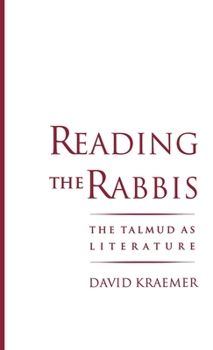Reading the Rabbis: The Talmud as Literature
Traditionally, the Talmud was read as law, that is, as the authoritative source for Jewish practice and obligations. To this end, it was studied at the level of its most minute details, with readers often ignoring the composite whole and attending only to final decisions. Methods of reading have shifted as more readers and students have turned to the Talmud for evidence of rabbinic history, religion, rhetoric, or anthropology; still, few have employed...
Format:Hardcover
Language:English
ISBN:0195096231
ISBN13:9780195096231
Release Date:August 1996
Publisher:Oxford University Press
Length:184 Pages
Weight:0.90 lbs.
Dimensions:0.7" x 5.7" x 8.7"
Customer Reviews
0 rating





